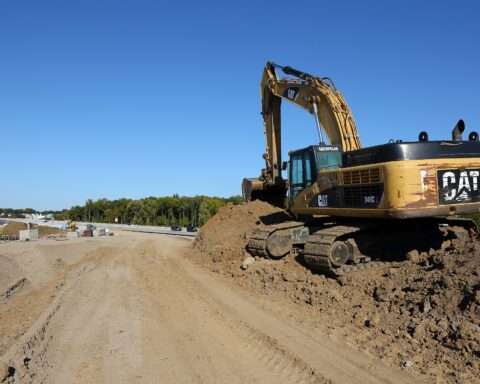The U.S. Department of Transportation (USDOT) has expanded low-interest financing opportunities for large transportation infrastructure projects.
DOT officials announced an update to the Transportation Infrastructure Finance and Innovation Act (TIFIA) on July 7 that allows all eligible projects to access up to 49% financing for project costs.
While federal law has allowed up to 49% financing since 2012, the Transportation Department’s own policy capped most projects at 33%. The new changes remove that departmental restriction, extending the higher financing percentage that was previously available only to rural projects and certain transit projects.
Congress created the TIFIA program in 1998 to address financing gaps for large transportation infrastructure projects. The federal program offers three types of assistance: direct loans, loan guarantees that provide federal backing for private lenders and standby credit lines for projects with uncertain revenue. These financing options support highway, transit, rail and freight infrastructure development nationwide.
The program requires a minimum project size of $50 million for most applicants, with smaller thresholds available for rural areas. TIFIA loans carry interest rates matching Treasury bond rates and allow up to 35 years for repayment. Borrowers can delay loan payments for five years after project completion, providing time to establish revenue streams.
The TIFIA program has grown significantly since its launch, helping fund transportation projects worth more than $150 billion nationwide. The program leverages about $52 billion in federal loans to attract much larger amounts of private and local investment. Federal officials say every government dollar spent on TIFIA can generate up to $10 in loans and attract $30 in total project investment.
A variety of organizations can apply for TIFIA financing, including state highway departments, public transit systems, local governments and private companies. This flexibility means different types of sponsors can implement major transportation projects that might be difficult to finance through conventional financing alone.
With the financing cap removed, DOT officials expect the policy change to help more projects move forward faster while reducing financing costs. Projects that can access higher loan amounts may need less federal grant money, potentially freeing up those grants for other infrastructure needs. The department also anticipates the streamlined approach will make the application and approval process more efficient for borrowers.
The policy change takes effect immediately, and applicants can now access the higher financing levels through the department’s existing application process. Applications are accepted on a rolling basis. Any projects currently in the USDOT pipeline may also benefit from the updated financing rules.
Photo by Robert So from Pexels













